Xiaowen Tian
Enabling NLoS LEO Satellite Communications with Reconfigurable Intelligent Surfaces
May 31, 2022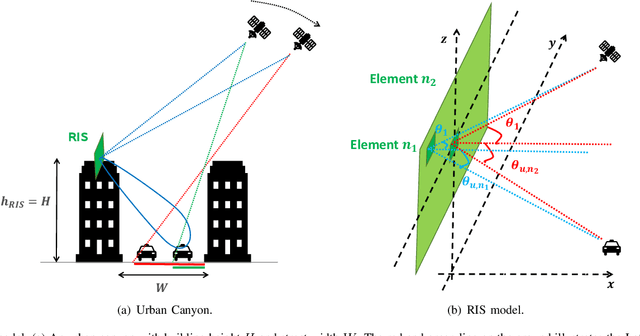
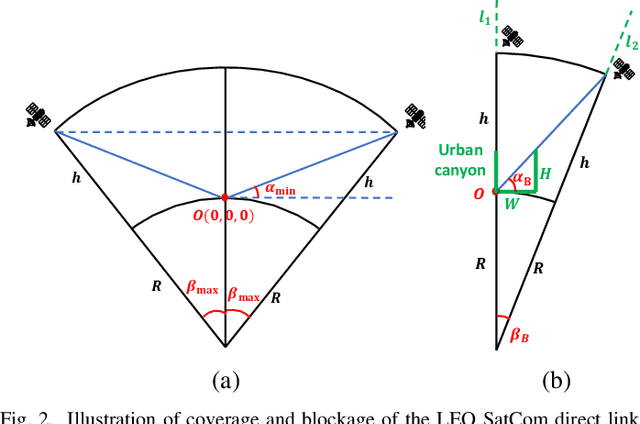
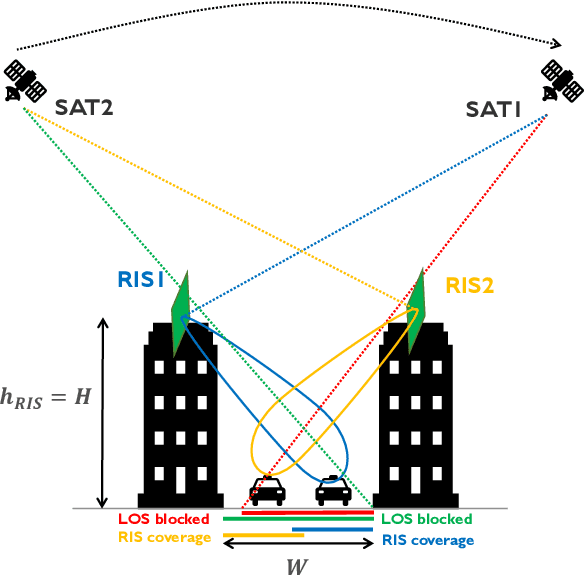

Abstract:Low Earth Orbit (LEO) satellite communications (SatCom) are considered a promising solution to provide uninterrupted services in cellular networks. Line-of-sight (LoS) links between the LEO satellites and the ground users are, however, easily blocked in urban scenarios. In this paper, we propose to enable LEO SatCom in non-line-of-sight (NLoS) channels, as those corresponding to links to users in urban canyons, with the aid of reconfigurable intelligent surfaces (RISs). First, we derive the near field signal model for the satellite-RIS-user link. Then, we propose two deployments to improve the coverage of a RIS-aided link: down tilting the RIS located on the top of a building, and considering a deployment with RISs located on the top of opposite buildings. Simulation results show the effectiveness of using RISs in LEO SatCom to overcome blockages in urban canyons. Insights about the optimal tilt angle and the coverage extension provided by the deployment of an additional RIS are also provided.
Optimizing the Deployment of Reconfigurable Intelligent Surfaces in MmWave Vehicular Systems
May 31, 2022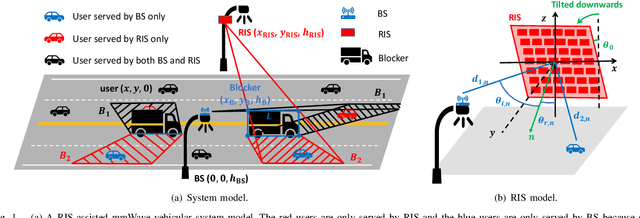
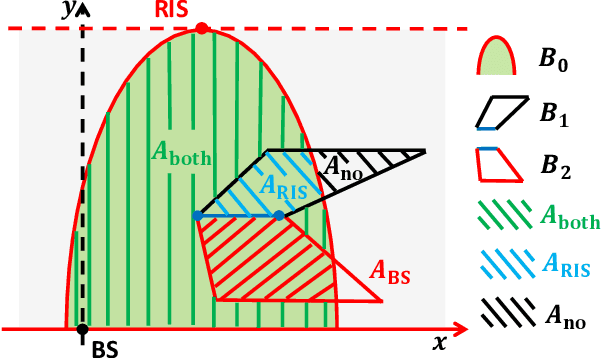
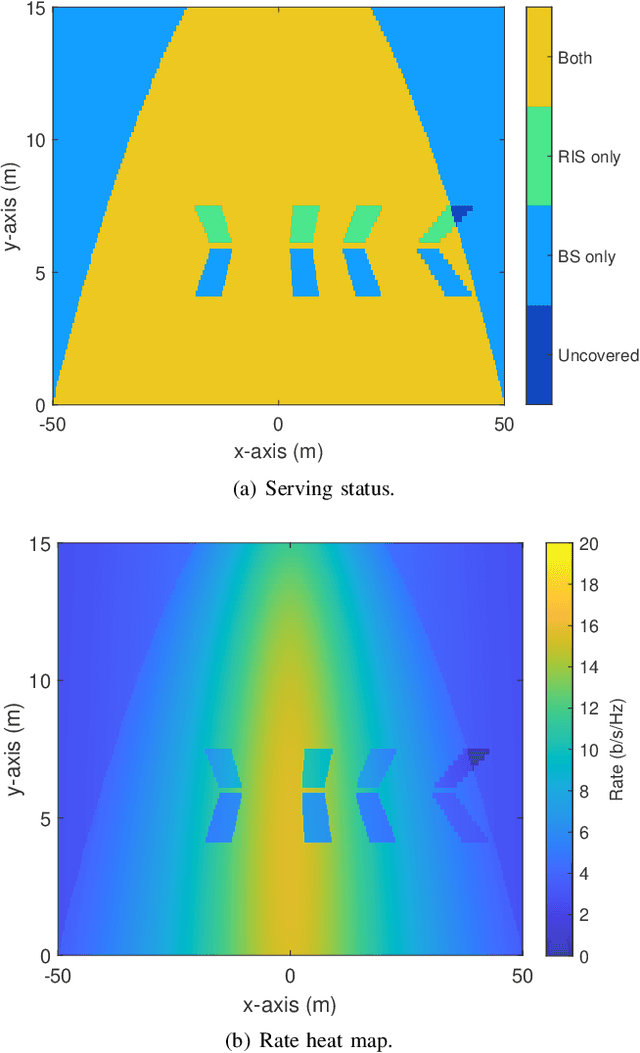

Abstract:Millimeter wave (MmWave) systems are vulnerable to blockages, which cause signal drop and link outage. One solution is to deploy reconfigurable intelligent surfaces (RISs) to add a strong non-line-of-sight path from the transmitter to receiver. To achieve the best performance, the location of the deployed RIS should be optimized for a given site, considering the distribution of potential users and possible blockers. In this paper, we find the optimal location, height and downtilt of RIS working in a realistic vehicular scenario. Because of the proximity between the RIS and the vehicles, and the large electrical size of the RIS, we consider a 3D geometry including the elevation angle and near-field beamforming. We provide results on RIS configuration in terms of both coverage ratio and area-averaged rate. We find that the optimized RIS improves the average averaged rate fifty percent over the case without a RIS, as well as further improvements in the coverage ratio.
Fast Beam Tracking for Reconfigurable Intelligent Surface Assisted Mobile mmWave Networks
Feb 22, 2021



Abstract:Millimeter wave (mmWave) communications are vulnerable to blockages and node mobility due to the highly directional signal beams. The emerging Reconfigurable Intelligent Surfaces (RISs) technique can effectively mitigate the blockage problem by exploring the non-line-of-sight (NLOS) path, where the beam switching is realized by digitally configuring the phases of RIS elements. To date, most efforts have been made in the stationary scenario. However, when considering node mobility, beam tracking algorithms designed specifically for RIS are needed in order to maintain the NLOS link. In this paper, a fast RIS-based beam tracking algorithm is developed by partly transforming the large amount of signaling time into the calculation happens at base station in a mmWave system with mobile users. Specifically, the differential form of optimal RIS configuration is exploited as the updating beam tracking parameter to avoid complex channel estimation procedure. The RIS-based beam tracking problem is then transformed into an optimization problem whose solution is found by a calculation-based search. Finally, by training on a small set candidate, RIS-based beam tracking is realized. The effectiveness and efficiency of the proposed RIS-based beam tracking algorithm is evaluated by simulations. It shows that the proposed algorithm has near-optimal performance with dramatic savings in terms of signaling time.
 Add to Chrome
Add to Chrome Add to Firefox
Add to Firefox Add to Edge
Add to Edge